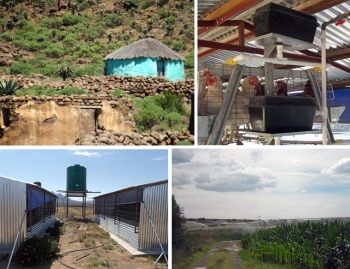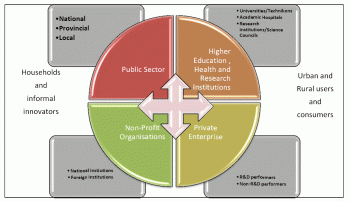Rural Innovation Assessment Toolbox (RIAT)
In developing contexts, innovation takes on particular and rather non-traditional characteristics. These include the significance of services and greater emphasis on practices such as of adoption and diffusion in contrast to invention. Understandings of innovation and the relevance of practices and products are spatial, temporal, dynamic and subject to constant change.
How can innovation be harnessed for or to help bring about equitable rural social and economic transformation?
The Rural Innovation Assessment Toolbox (RIAT) is an evolving set of tools that can help to answer this question. There is a need to understand the many actors and factors influencing new knowledge generation, diffusion, adaption and their use in rural development. Local government and other stakeholders in the Rural District Municipalities (RDMs) need to facilitate interaction among the many innovation actors and partners to ensure inclusive, focused development and optimal use of local resources for locally driven development that has desirable social, environmental and economic outcomes.
RIAT helps us to understand the following with regard to the nature of rural systems of innovation:
• The actors involved and linkages within and across spatial innovation systems;
• The main types of innovation activities or processes;
• The roles of economic sectors within rural innnovation systems;
• The presence of networks and the use of local resources in innovation activities;
• The nature and potential of linkages to the National System of Innovation (NSI).
National System of Innovation
The Department of Science and Technology (DST) initiated the Rural Innovation Assessment Toolbox (RIAT) to help guide the Rural Innovation Partnership, a forum that coordinates state-supported development in all 24 Rural District Municipalities in South Africa. This project is a work in progress (phases one and two were completed in May 2014) and these pages will be updated from time to time to provide information on progress.



